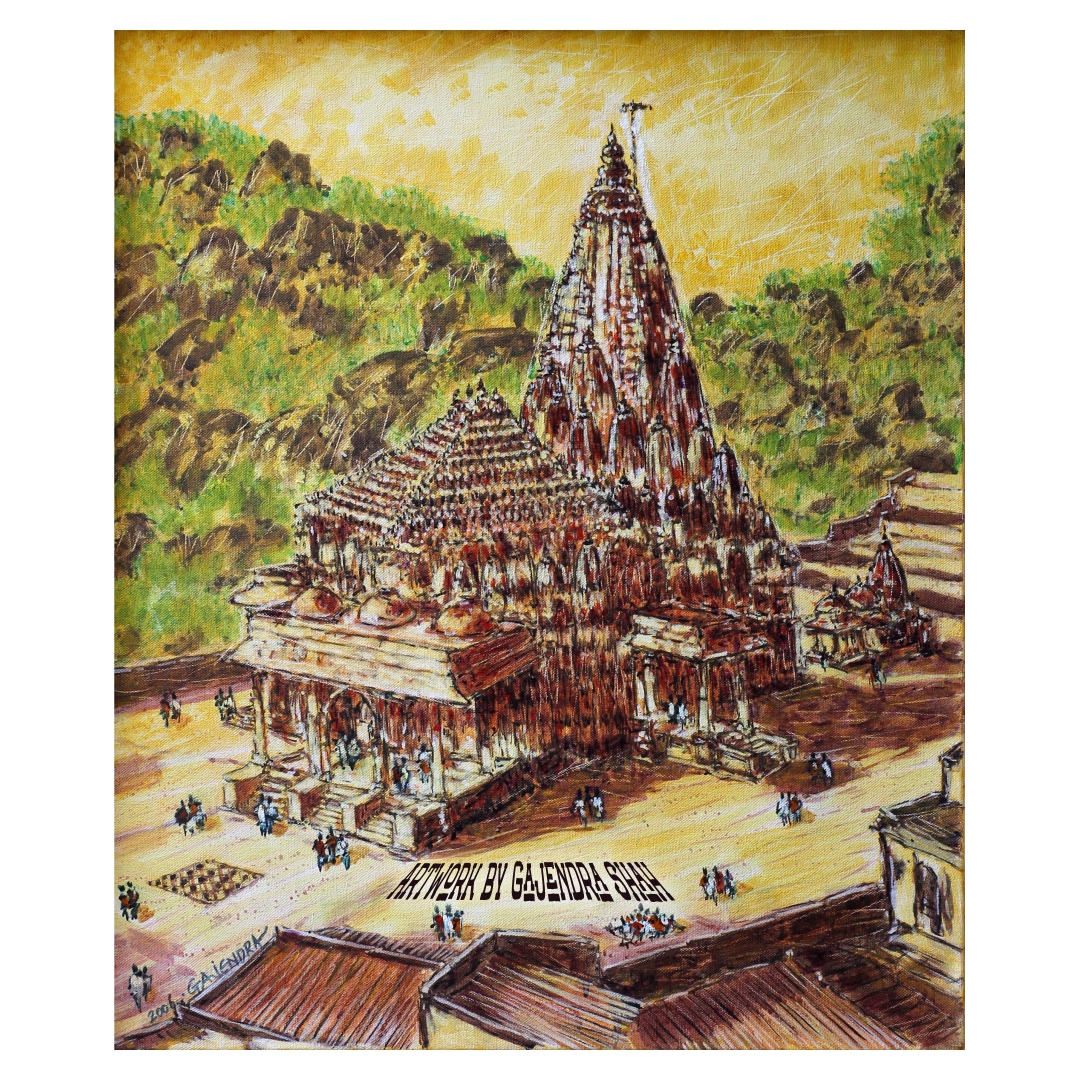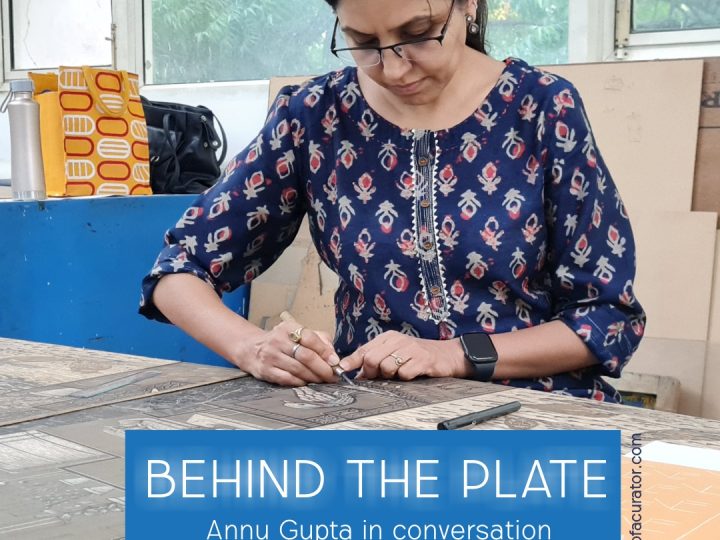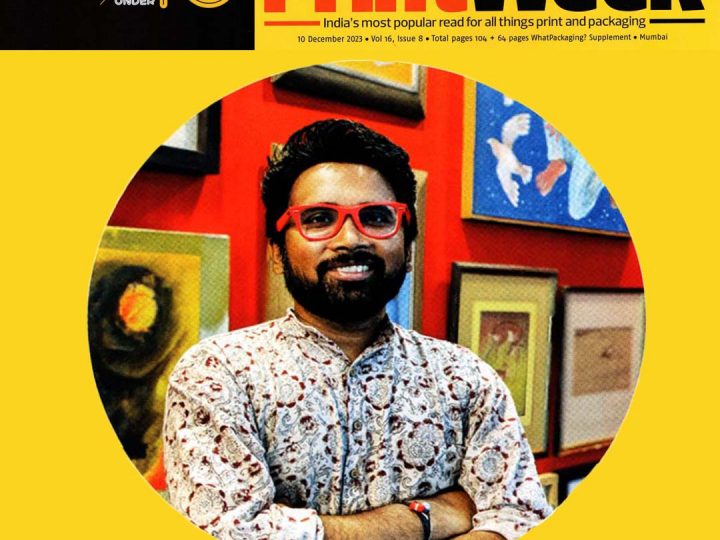OPPORTUNITY
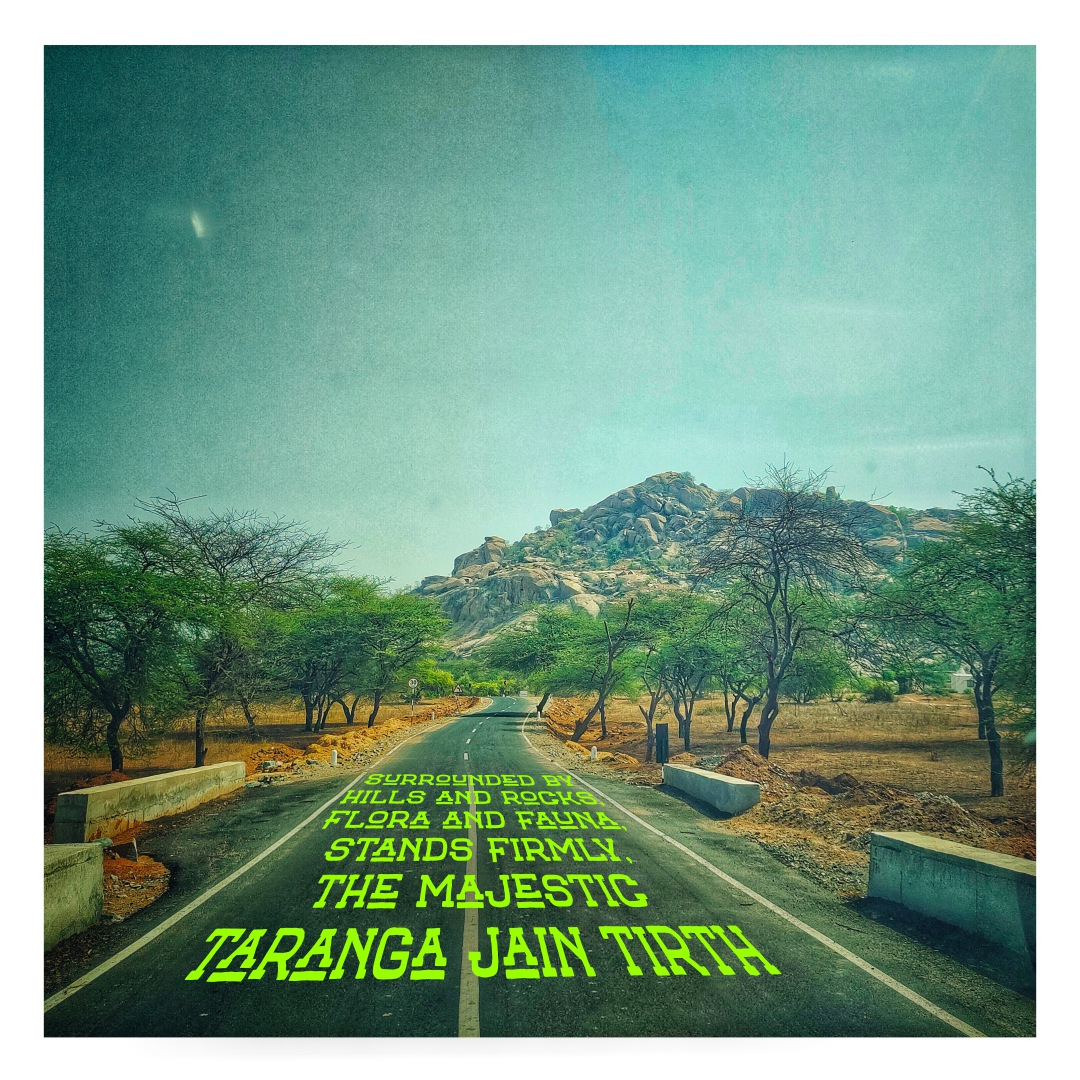
Surrounded by hills and rocks, flora and fauna, stands firmly, the majestic Taranga Jain Tirth
Surrounded by hills and rocks, flora and fauna, stands firmly, the majestic Taranga Jain Tirth. I had the privilege to visit this magnificent Derasar a few days back. I firmly believe it is one’s Karma and Punya, which allows you to visit such alluring temples and of course, the opportunity to see, feel, and touch the great ancient idols.
The first time I heard of Taranga Temple was when I saw the stunning artwork by Shri Gajendra Shah. From 2003 to 2007, I had seen many paintings of his under our collection based on Jain temples and places of pilgrimage from Palitana to Ranakpur. He had not only painted it on canvases but beautiful sketches on paper too. Cut to 2009-2010, we had planned to visit Taranga along with cousins on Diwali but didn’t succeed.
It was only after 12 years, with the permission of Lord Ajitnath Bhagwan (the 2nd Jain Tirthankar and the Mulnayak at the Taranga Tirth) I had this opportunity to visit. By now, I had forgotten the painting image and before going to Taranga Tirth, I intentionally hadn’t googled the place in order to perceive things around me organically and not form any preconceived notions. All I was expecting was nice Bhakti amidst the hills in the scorching heat. Little did I know what the Tirth had to offer in the form of the marvelous exhibit of Jain art and architecture.
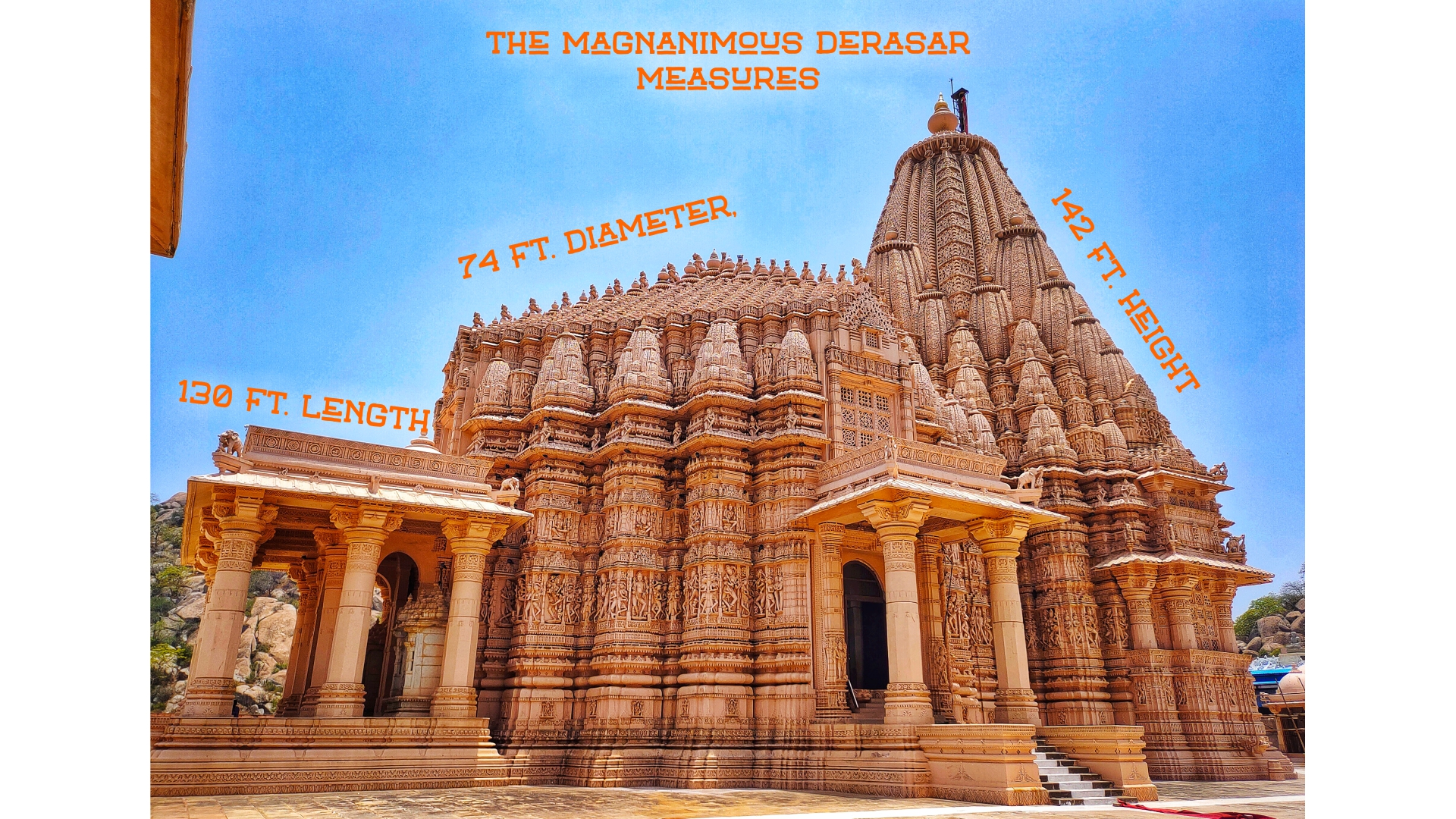
The Magnanimous Derasar - Taranga Tirth
EXPERIENCE

The Fine Balance of Aesthetics & Decorative Elements
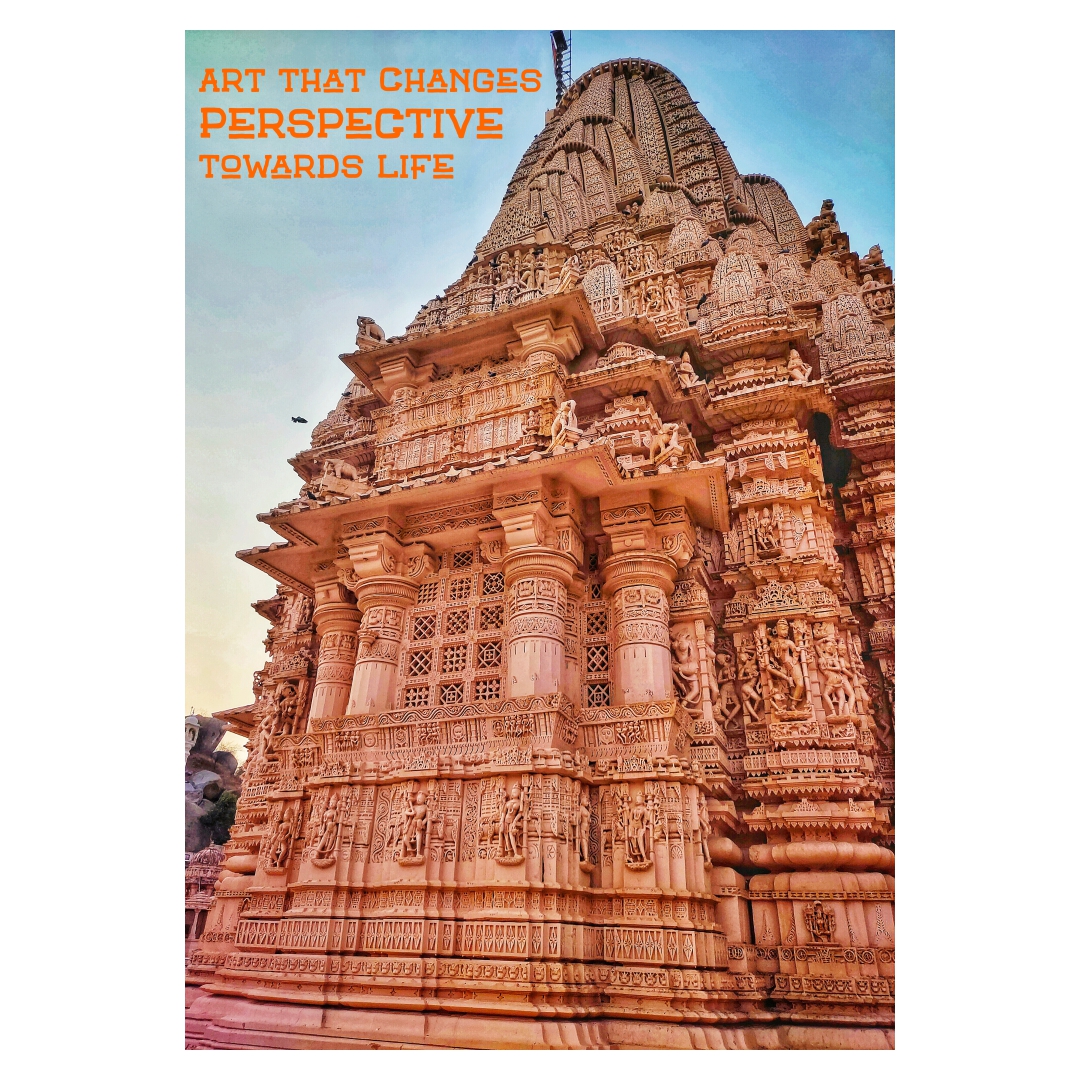
Art that changes perspective towards life
The first look from a far distance seemed to be just like another Jain temple. When I started moving nearer to the Derasar, the Bhaav (emotions) in me started changing. With one step moving forward, the overwhelming experience started to take over. The magnanimous Derasar measures 74 ft. in diameter, 130 ft. in length, and 142 ft. in height. The detailed carving is never-ending till the eyes can reach and the mind can comprehend from height to width. The interesting part was that none of the parts was technically and visually an overdo. The aesthetics were as much intact as the decorative elements on the outer surface.
As soon as I entered the Garbh Gruh, I felt I was in a palatial darbar. The grand (both in height, width, and circumference) pillars took my attention, it blew my mind. Never had I experienced this sort of grandness in a Derasar in recent times ( except in the temples at Ranakpur, Abu, and Palitana) but still, this was altogether a different experience to understand the art and architecture of Jain temples.
All my soul wanted to do was to sit there and enjoy the vibe, the energy. Once I was satisfied, I entered the Ghabharo and while climbing to the 101-inch idol of Shri Ajitnath Bhagwan, I was mentally, emotionally, and spiritually into HIS feet. I realized why larger-than-life idols were promoted in ancient Bharat. It enthralls you in its aura. The devotee submits himself or herself to that grandness, and that submission is altogether at a different level.
I experienced all this while just standing in front of the white ancient idol installed by the great King Kumarpal under the guidance and direction of Param Pujya Acharya Shri Hemchandra in 1165 AD. One of the spiritual episodes I had at that moment was when I found answers. There are many questions which we seek in our daily life, while standing in front of the idol, without any effort of seeking those answers, I found them. I don’t know what I found, but I did. Considering my past ordeals, somewhere, someday I will immediately get those answers when they will be needed.
JAIN ART
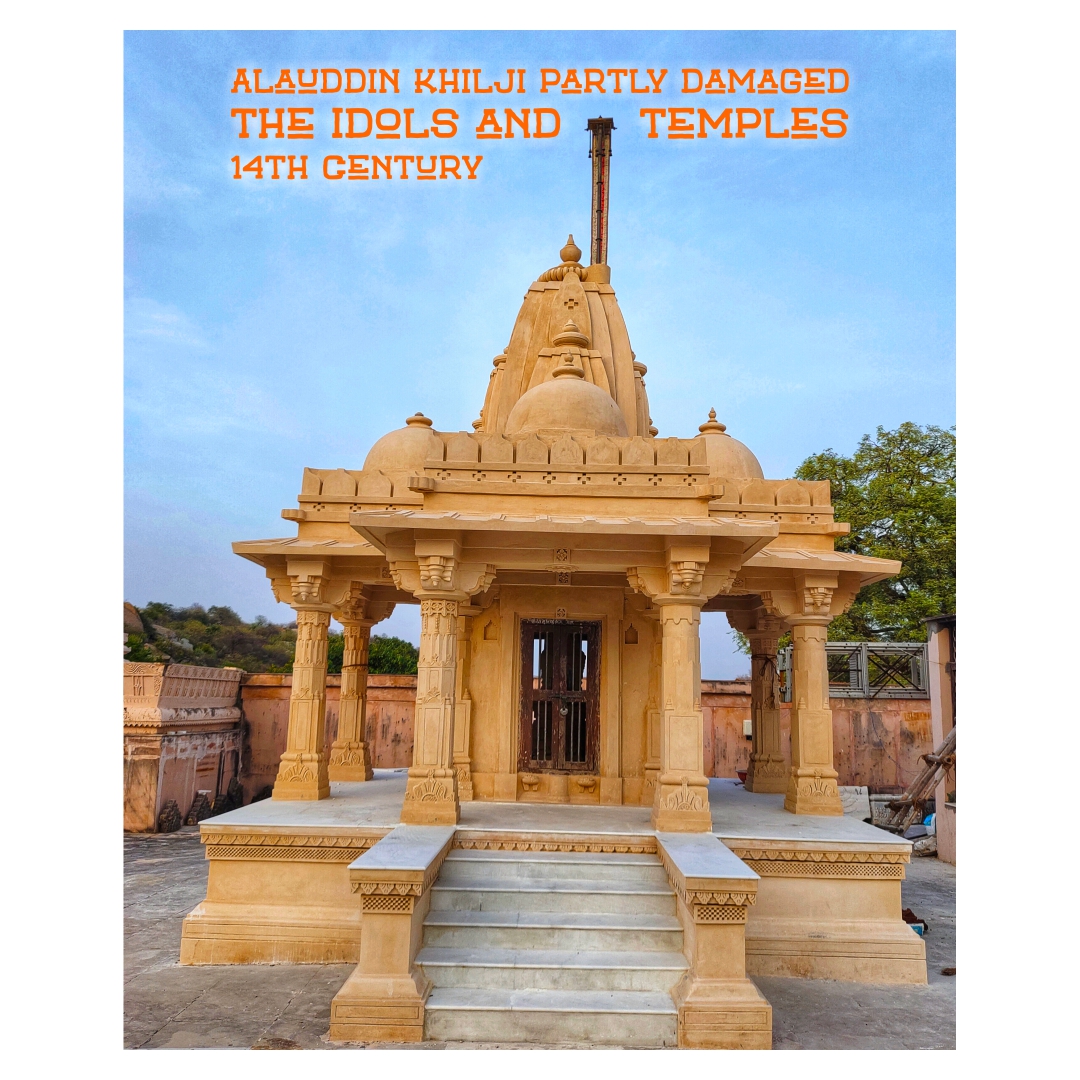
Alauddin Khilji partly damaged the Idols and temples in the 14th century
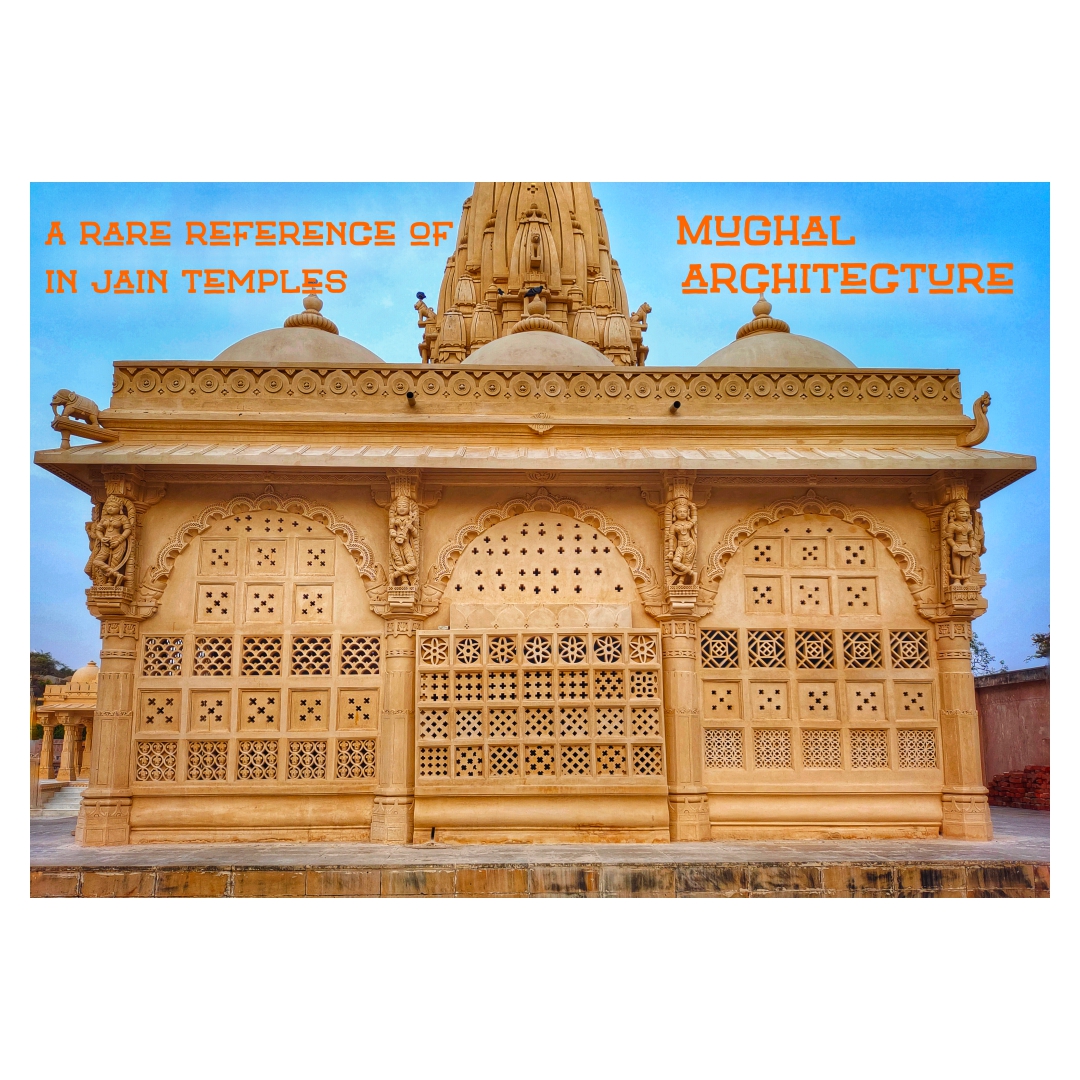
A rare reference of Mughal architecture in Jain Temples
Along with the power of spirituality and energy of the idols and space, Art to plays a special role to evoke those emotions. An aesthetically beautiful grand idol that overpowers the viewers and helps to create the deep emotion that can change a person’s perspective towards life. Maybe, Alauddin Khilji must have realized the similar influence of art and spirituality, and hence partly damaged the Idols and temples in the 14th century. Fortunately, it was restored by Shresthi Shri Govindji, a Sanghpati from Idar state in Gujarat.
Jain art and architecture are not for Art for the Sake of Art but have one definite purpose. To evoke the Bhaav, the emotions of Spirituality that support the person to reach the spiritual podium, connect with the supreme being and own-self that ultimately help the devotee to reach Moksha.
The specialty of all Jain Tirth has been to have the simplest form of Mulnayak and all other Murti’s (Pratima of Tirthankaras). It is partly due to their characteristics but what is interesting to note is that the outer part of the Derasar is the opposite. It has splendid intricate carvings and detailing that the devotee can admire. And how! The most spectacular and marvelous detailing and sculpting are in the pillars, ceilings, windows, and the outer part. All these indicate the celebration and tasteful life – the worldly life of a Shravak. While the Mulnayak, has chosen the path of moksha and we get inspired to choose the same path leaving the worldly Sukh and Dukh.
Also, looking at such grandeur, a person will naturally get attracted and develop the emotion to worship, and bow, to the Supreme Being. The feeling is such that any genuine person and pure at heart, will have moist eyes for a moment. Undergoing such emotion, a person shall definitely feel proud to have been born into such a tradition but more than that the feeling of gratitude is developed. The thankfulness then converts into compassion towards other living beings.
Art helps to get in sync with the supreme soul in one of the purest ways. As an art admirer and spiritual seeker, I am thankful to my karma for this religious adventure.
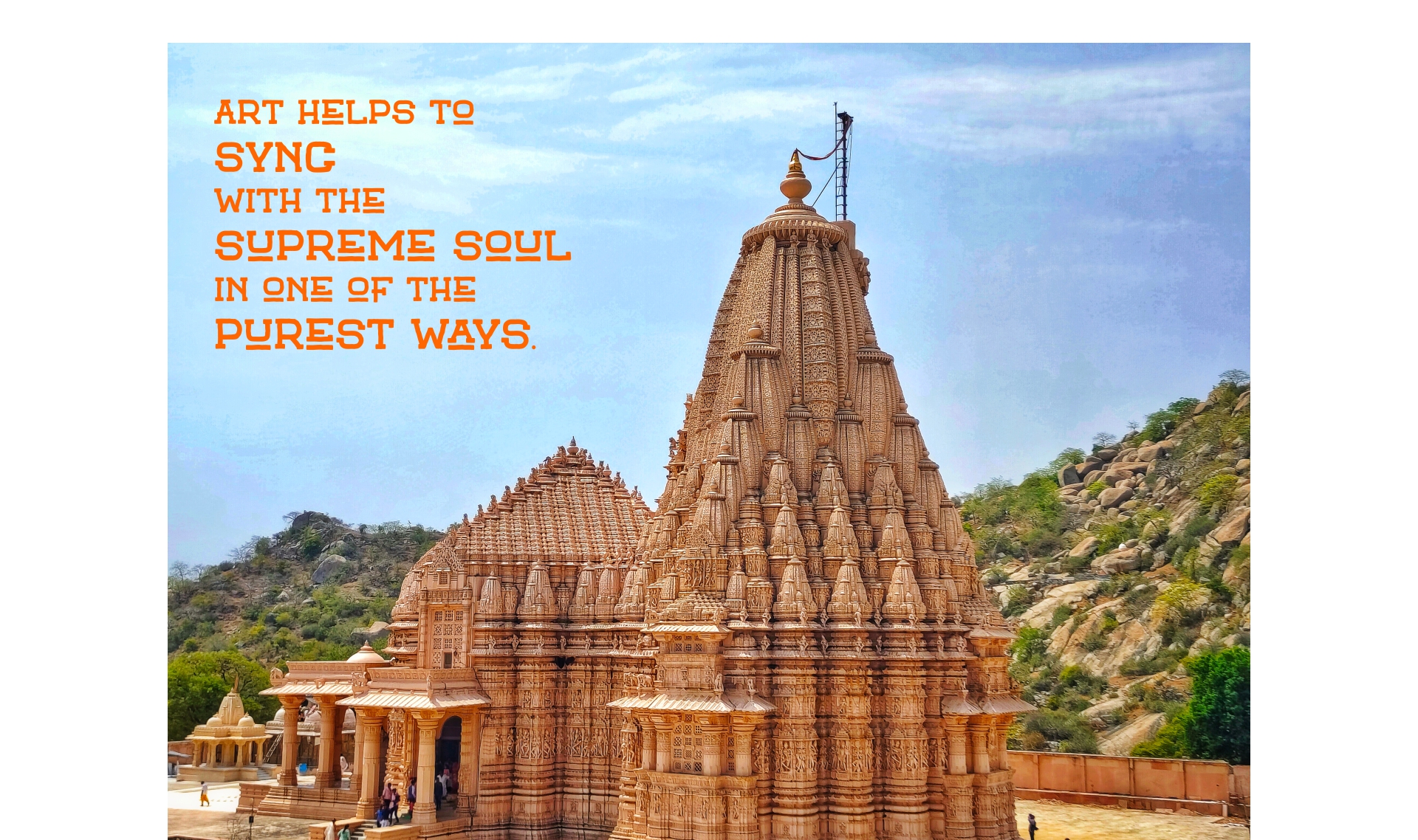
Art helps to sync with the supreme soul in one of the purest ways

A progressive tweet by Smt. Smriti Irani which will be beneficial to the devotees visiting Taranga.
Photos and Text © Chaitya Dhanvi Shah
printing, distribution or copying of this text/images without permission is not allowed.


